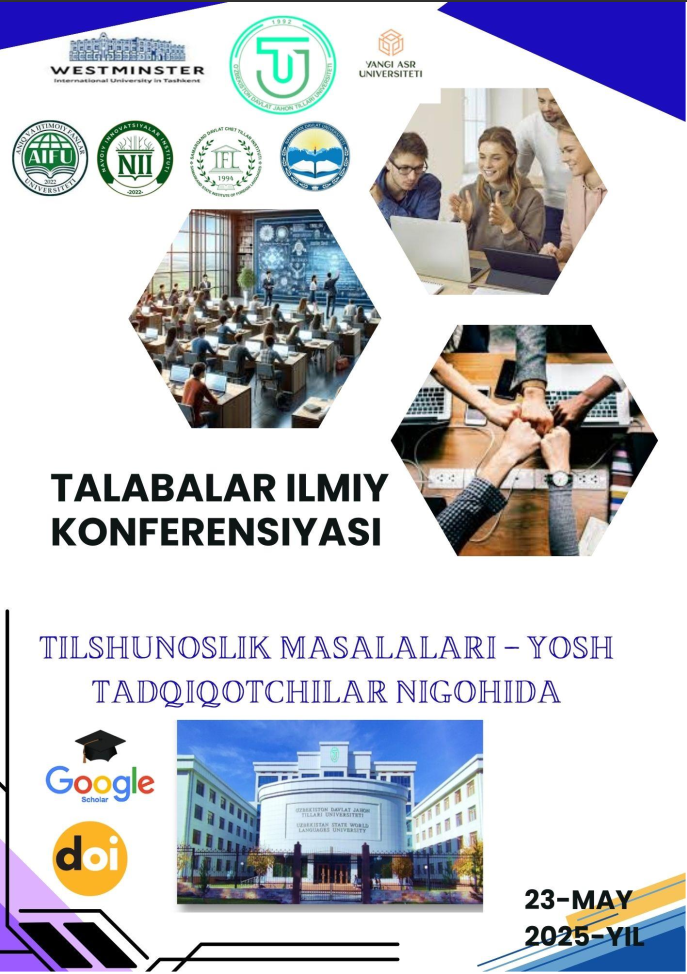PHONOLOGICAL and MORPHOLOGICAL TYPOLOGY in AUTHENTIC ENGLISH MATERIALS: IMPLICATIONS for TEACHING
https://doi.org/10.5281/zenodo.15517340
Kalit so‘zlar
Phonology, Morphology, Authentic materials, Word formation, Prefixes and suffixes, Stress patterns, Intonation, Language teaching, Language acquisition, Real-world texts, Pronunciation, Language assessment.Annotasiya
This article explores the role of phonological and morphological typology in authentic English materials, such as newspapers, blogs, and advertisements, and their implications for language teaching. It examines how phonological features like stress patterns, intonation, and vowel shifts, alongside morphological elements including word formation processes such as prefixes, suffixes, and derivation, are integrated into real-world texts. The article further delves into practical classroom applications, offering lesson ideas that incorporate these linguistic elements to foster student engagement and improve language skills. It also highlights how authentic materials can be used to assess students’ progress, allowing for more meaningful and context-driven evaluations. The findings underscore the importance of using authentic materials to teach phonology and morphology, as they provide students with a more comprehensive, practical, and engaging approach to language learning. In conclusion, the use of real-world texts significantly enhances students’ understanding of language form and meaning, offering them the opportunity to engage with English as it is naturally used.
Foydalanilgan adabiyotlar ro‘yhati
Biber, D., Conrad, S., & Reppen, R. (1998). Corpus Linguistics: Investigating Language Structure and Use. Cambridge: Cambridge University Press.
Bybee, J. (2010). Language, Usage and Cognition. Cambridge University Press.
Comrie, B. (1989). Language Universals and Linguistic Typology: Syntax and Morphology. University of Chicago Press.
Cook, V. (2003). Thematic Structure in English Morphology. Linguistic Review, 20(2), 145-171.
Crystal, D. (2008). A Dictionary of Linguistics and Phonetics. Blackwell.
Gilmore, A. (2007). “Authentic materials and authenticity in foreign language learning.” Language Teaching, 40(2), 97–118.
Hilola, X. (2025). INNOVATIVE APPROACHES AND ACQUISITION METHODS IN LANGUAGE LEARNING. TANQIDIY NAZAR, TAHLILIY TAFAKKUR VA INNOVATSION G ‘OYALAR, 1(7), 396-398.
Nation, P. (2001). Learning Vocabulary in Another Language. Cambridge University Press.
Schmitt, N. (2010). Researching Vocabulary: A Vocabulary Research Manual. Palgrave Macmillan.
Spolsky, B. (2004). Language Education and Identity. Cambridge: Cambridge University Press.
Xujaniyazova, H. (2024). YURIDIK RITORIKADA MADANIYATNING AKS ETISHI. TAMADDUN NURI JURNALI, 6(57), 228-230.

